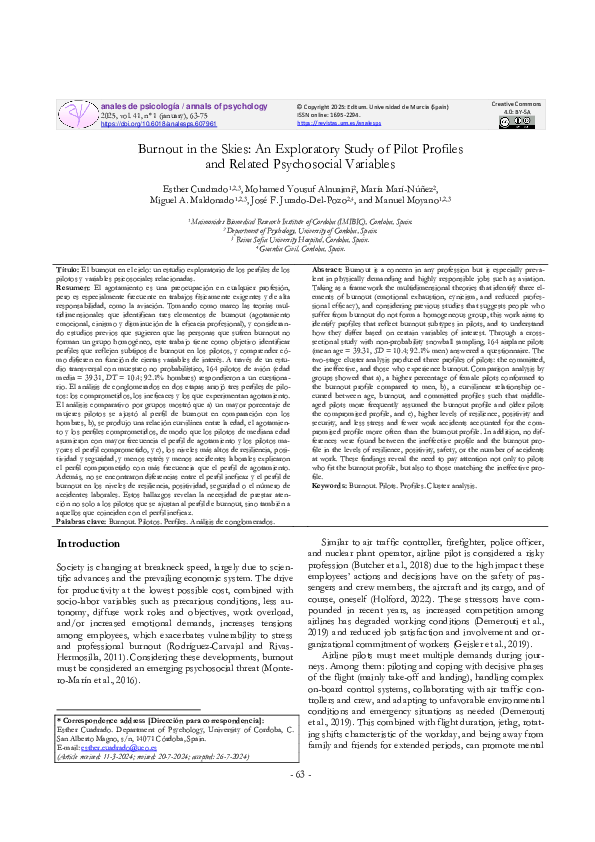Burnout in the skies: an exploratory study of pilot profiles and related psychosocial variables

2025
41
1
burnout ; risk assessment ; aircraft pilot
Psychosocial risks
https://dx.doi.org/10.6018/analesps.607961
English
Bibliogr.
"Burnout is a concern in any profession but is especially prevalent in physically demanding and highly responsible jobs such as aviation. Taking as a framework the multidimensional theories that identify three elements of burnout (emotional exhaustion, cynicism, and reduced professional efficacy), and considering previous studies that suggests people who suffer from burnout do not form a homogeneous group, this work aims to identify profiles that reflect burnout subtypes in pilots, and to understand how they differ based on certain variables of interest. Through a cross-sectional study with non-probability snowball sampling, 164 airplane pilots (mean age = 39.31, SD = 10.4; 92.1% men) answered a questionnaire. The two-stage cluster analysis produced three profiles of pilots: the committed, the ineffective, and those who experience burnout. Comparison analysis by groups showed that a), a higher percentage of female pilots conformed to the burnout profile compared to men, b), a curvilinear relationship occurred between age, burnout, and committed profiles such that middle-aged pilots more frequently assumed the burnout profile and older pilots the compromised profile, and c), higher levels of resilience, positivity and security, and less stress and fewer work accidents accounted for the compromised profile more often than the burnout profile. In addition, no differences were found between the ineffective profile and the burnout profile in the levels of resilience, positivity, safety, or the number of accidents at work. These findings reveal the need to pay attention not only to pilots who fit the burnout profile, but also to those matching the ineffective profile."
Digital
The ETUI is co-funded by the European Union. Views and opinions expressed are however those of the author(s) only and do not necessarily reflect those of the European Union or the ETUI.